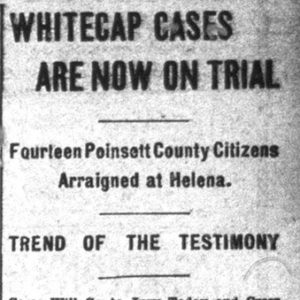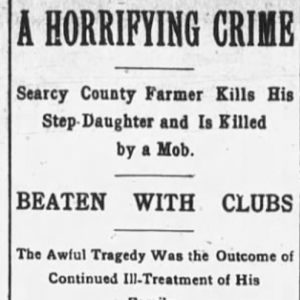 Whitecap Article
Whitecap Article
Entry Category: Early Twentieth Century
 Whitecap Article
Whitecap Article
Williams, Ernest (Reported Lynching of)
Williams, John (Lynching of)
Wilson, Alexander (Lynching of)
 Alexander Wilson Lynching Article
Alexander Wilson Lynching Article
Wilson, Hog (Lynching of)
Woodman, Joe (Lynching of)
 Joe Woodman Lynching Article
Joe Woodman Lynching Article
 Woodward Lynching Editorial
Woodward Lynching Editorial
 Woolworth's
Woolworth's




